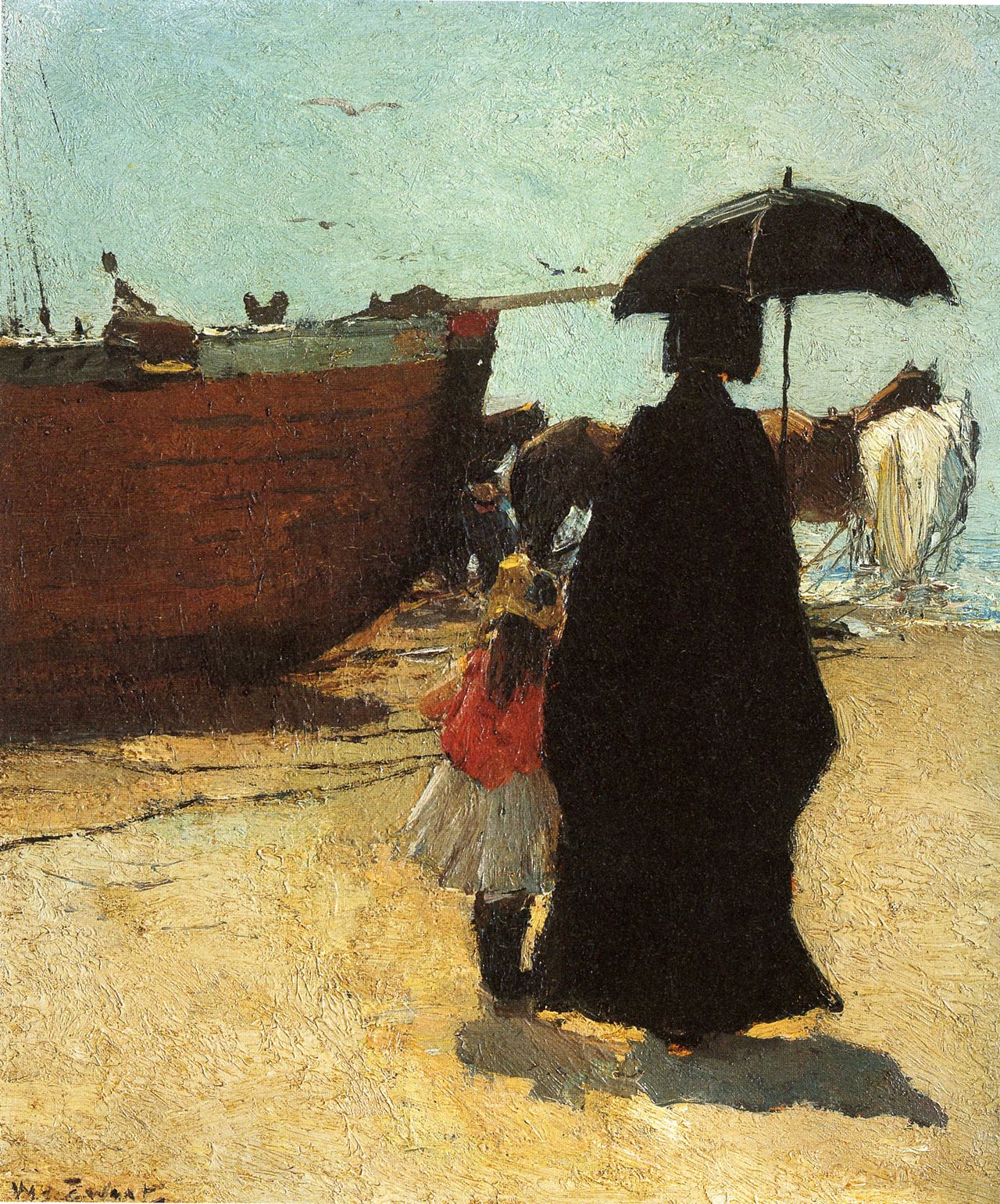Wilhelmus Hendrikus Petrus Johannes 'Willem' de Zwart (The Hague 1862-1931), is considered an after-flowering of the Hague School and is sometimes called the 'Hague Breitner' with whom he was also friends and painted together. Willem de Zwart grew up in The Hague as the eldest of six brothers and two sisters. His family were coal burners. His brother Pieter also became a painter.
De Zwart attended the Hague Academy of Visual Arts at the same time as George Hendrik Breitner, Suze Robertson, Johannes Akkeringa, Isaac Israels and Floris Verster. He also received lessons from Jacob Maris, which can be seen in the landscapes and forest views that De Zwart painted until 1885. In 1885 he became a member of Pulchri studio and the Dutch Etching Club.

The Dutch naturalism of the Hague School was continued in the same vein, but with its own interpretation. His subjects were typical of the Hague School, his style and use of color more like the Amsterdam Impressionists. His landscapes, cityscapes, figure paintings, portraits and still lifes show a smooth, bold brushstroke. De Zwart applied the paint thickly, sometimes directly from a tube, with bright color touches in bold reds, yellows and blues, which give a special vibrancy to his paintings. Between 1880 and 1895 is considered his most fruitful and strongest period. Around 1890 he was also in Paris where he met Jan Toorop and others.

In 1889 De Zwart moved to Loosduinen and married Maria Reevers there in 1892. At that time he often painted cityscapes, with stationary carriages, still lifes and the surroundings of Loosduinen. The test became broader and less refined. In 1894 the family moved to the Gooi and the Larense School and farm life were the inspiration. In 1900 De Zwart moved to Amsterdam, where he (again) spent a lot of time with Breitner and Willem Witsen. At that time he made cityscapes - often with tram horses and figure pieces and girls in kimonos - which show the influence of his friends.
From 1892, De Zwart had a 'contract' with Kunsthandel E.J. van Wisselingh & Co in Amsterdam, where many exhibitions were organized and his work was in great demand and he was awarded several times nationally and internationally.

But De Zwart himself was almost never satisfied with his work. After a gap year in Bloemendaal in a terraced house in 1905, he soon moved to Scheveningen. There he apparently found peace in painting typical Hague School scenes of beach scenes with fishermen and bomb barges. His painting style became increasingly expressive over the years and, according to some, kept up with his unpredictable behavior.
When the contract with Van Wisselingh was broken after 1910, the insecure and serious De Zwart was unable to sustain himself and fell prey to financial worries and severe depression and decided to divorce his wife.
In 1907 he was admitted to the Oud Rosenburg asylum in Loosduinen due to delusions of persecution. After his treatment, De Zwart moved to Veur (Leidschendam), where he painted many meadow landscapes with milking farmers. In 1917 he returned permanently to The Hague, where he lived and worked in the shelter, tormented by 'spirits' that had a negative influence on his work. Out of dissatisfaction he even decided to destroy part of his work. Willem de Zwart also taught at the Hague Academy to, among others, Herman Bogman Jr., Herman Heuff, Cor Noltee and Martinus van Regteren Altena. In 1931 Willem died of a stroke.
